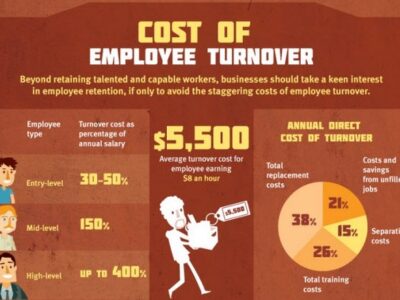Conflict resolution in the workplace is something that many businesses struggle with. Conflicts are inevitable to an extent, and they can have negative effects on the business and workplace. They can create tension, slow progress, decrease efficiency, limit creativity, create toxicity, and much more. Resolving conflict in the workplace is essential if you want a positive and thriving business.
Because of all this, there is a high demand for workplace conflict resolution strategies. With the right approach and methods, it’s possible to resolve conflicts at work as they arise. This can ultimately lead to a more positive, productive, and efficient workplace. However, finding those strategies can often be easier said than done.
In today’s article though, we’re going to take a close look at how to handle conflict resolution in the workplace. We’ll look at the basics of workplace conflicts, how they arise, the importance of resolving them, and resolution strategies, and offer a step-by-step guide on how to handle conflicts in the workplace.
Understanding Conflict in the Workplace
First, let’s start by trying to understand conflict in the workplace. Knowing what conflicts are, how they arise, and their impact will help make it more clear as to why conflict resolution skills at work are so important.
Broadly, workplace conflict is any sort of conflict involving employees in a workplace. That can include conflicts between workers and managers, conflicts within teams, or conflicts amongst management. It can also include conflicts that take place outside of working hours, such as conflicts via email or social media after hours.
Workplace conflicts come in all different shapes and sizes. Sometimes it’s something small, like accidentally crossing someone’s personal boundaries. Other times it’s a much bigger issue, such as discrimination in the workplace. Employees may be upset with poor management, or management might be upset about underperforming teams/employees. It’s important to remember that workplace conflicts can be about anything and can involve anyone in the workplace.
That said, here are some of the most common causes of workplace conflict:
- Poor communication.
- Personality clashes.
- Unclear expectations.
- Toxic work environment.
- Silos.
- Unfair treatment.
- Poor management.
- Creative differences.
That is not a comprehensive list, but it should give you some sort of idea of how conflicts can arise at work. All it takes is something like poor communication or not breaking down silos, and it can quickly turn into a conflict with negative impacts.
Speaking of negative impacts, let’s briefly touch on the potential effects of conflict in the workplace. One of the biggest negative effects is the impact on workplace dynamics. The culture of your workplace plays a big role in things like creativity, efficiency, and productivity. Leaving conflicts to fester can create toxicity, which directly gets in the way of getting the job done as efficiently as possible.
Another negative impact is on overall productivity. People work their best when they are happy, and satisfied, and can work together with those around them. Conflicts create barriers that get in the way of that. For example, say two employees on a team are having a conflict about their values. That can prevent them from working together, limiting creativity, efficiency, and more.
At the end of the day, you want a positive and welcoming workplace that encourages communication and teamwork. Conflicts make achieving that more difficult and can limit potential success.
The Importance of Conflict Resolution Skills at Work
Before covering some strategies for conflict resolution at work, let’s take some time to discuss the importance of conflict resolution skills. As we just discussed, conflicts can have numerous negative effects on your workplace and business. Therefore, it’s key that you have the skills to resolve those conflicts.
As the name suggests, conflict resolution skills are specific skills you can use to resolve conflicts. These are incredibly important because they are essential if you want to end conflicts in the workplace effectively. Trying to end a conflict can go poorly and possibly make things worse if you don’t have the right approach. So having skills you can use to resolve conflicts quickly, efficiently, and professionally is key for the workplace.
Two of the most important things in conflict resolution are communication and empathy. To end a conflict, there needs to be effective communication. The parties in conflict need to be able to communicate with each other about their concerns, issues, and potential resolutions. Those seeking to help resolve the conflict also need to be able to communicate with both parties if they want to find a resolution.
Empathy is also an essential part of conflict resolution in the workplace. People need to be able to understand how others are feeling and where they’re coming from. Conflicts are rarely as simple as right and wrong or good and bad. They are complicated, and both sides often have good reasons for their concerns or issues. Being able to understand everyone’s point of view and feelings goes a long way in resolving conflicts at work.
Conflict Resolution Strategies in Workplace
We’re going to provide a step-by-step conflict resolution guide shortly, but let’s cover some of the basic conflict resolution strategies in the workplace first. These are some of the most important things to consider and utilize when resolving conflicts, so be sure to keep these in mind when resolving a conflict.
- Active listening
Taking the time to actively listen to peoples’ complaints, concerns, fears, etc, is incredibly important for conflict resolution. Before you can resolve a conflict, you have to know what it actually is, and that involves active listening. - Identifying common goals
Common goals help unite people at the workplace. Identifying them can help bring people together and remind them of the bigger picture. - Seeking mediation
Mediation may not be a first choice, but it can be incredibly effective. Oftentimes, getting a third-party to help mediate the conflict can help ease tensions and find a resolution. - Empathy training
As mentioned earlier, understanding others’ thoughts and feelings can help de-escalate conflicts and reduce tension or hostility. - Team building
Team building can be a great way to bring people together and reinforce essential conflict resolution skills, such as communication, empathy, and more. A few team building programs like Charity Bike Build, In It to Win It, and The Big Picture can help improve conflict resolution.
Step-by-Step Guide: How to Handle Conflict Resolution in the Workplace
If you’re still asking “how to handle conflict resolution in the workplace” or “how do you resolve a conflict at work,” don’t worry; we’ve prepared a step-by-step guide on how to handle conflict resolution in the workplace. This guide will give you a few basic steps to follow, as well as strategies to use to help ensure your conflicts are resolved quickly and effectively.
1. Acknowledge the Conflict
Step one is acknowledging the conflict. You can’t resolve a conflict if you don’t know it exists or don’t want to admit there is a conflict. Even though it seems simple, this step is often a struggle for people.
Many don’t want to acknowledge that there are issues in the workplace. Sometimes management is too disconnected or out of touch to realize there is a conflict. It can feel easier to just ignore a conflict than to actually deal with it. However, it is essential that conflicts be recognized and acknowledged.
2. Understand All Perspectives
The next step is to understand all the perspectives of the conflict. As mentioned above, conflicts are rarely simple. There are usually multiple different perspectives, and they all typically have reasons for their feelings.
If you want to resolve a conflict, you’ll need to understand where everyone is coming from. This is also where empathy comes in. You want to empathize with their feelings and perspectives and understand where this conflict is coming from.
3. Apply Problem Solving Techniques
Once you understand all the perspectives, then it’s time to apply problem solving techniques. The goal here is to find a mutually beneficial solution that leaves everyone satisfied in the end. You don’t want one party satisfied while the other is still upset, as that just leads to more conflict.
The strategies listed above can be very useful here. Things like active listening and identifying common goals can help find a solution that makes everyone happy. Mediation can also be a good strategy here if you’re having trouble and feel a third party is necessary. The goal though is to get all parties involved in crafting a solution they will be satisfied with.
4. Follow Up
Last but not least is follow up. Just because a conflict is resolved doesn’t mean it (or another conflict) won’t arise in the future. You need to follow up to ensure the conflict stays resolved and to prevent other potential future conflicts.
Keep an eye on past conflicts and the issues that caused them. If you notice something that may cause conflict again, deal with it before it becomes a bigger issue. You may also make changes based on what you’ve learned from dealing with past conflicts, such as how meetings are conducted, how work is divided, etc.
Resolving Conflicts at Work With TeamBonding
Conflicts are inevitable in the workplace, and they can create problems for your business if left unchecked. They can create tension, and toxicity, decrease productivity, and more. However, you can address conflicts by utilizing the right strategies such as those listed here.
Start dealing with your workplace conflicts and create a better workplace with TeamBonding. We are here to help and have over 25 years of experience putting on corporate events. We have a wide range of events that can help address and prevent workplace conflicts. So take action and get in touch with us today!















